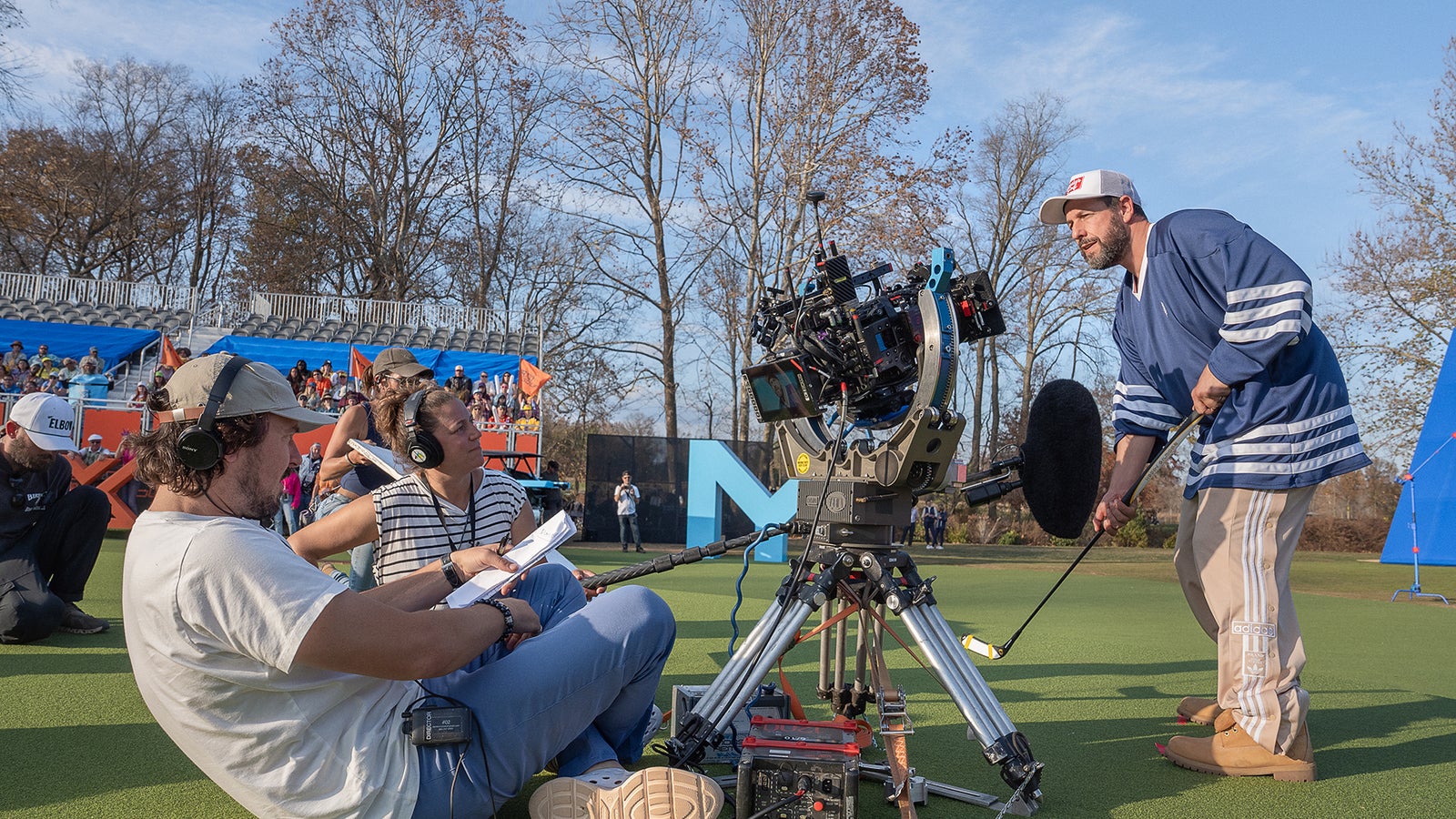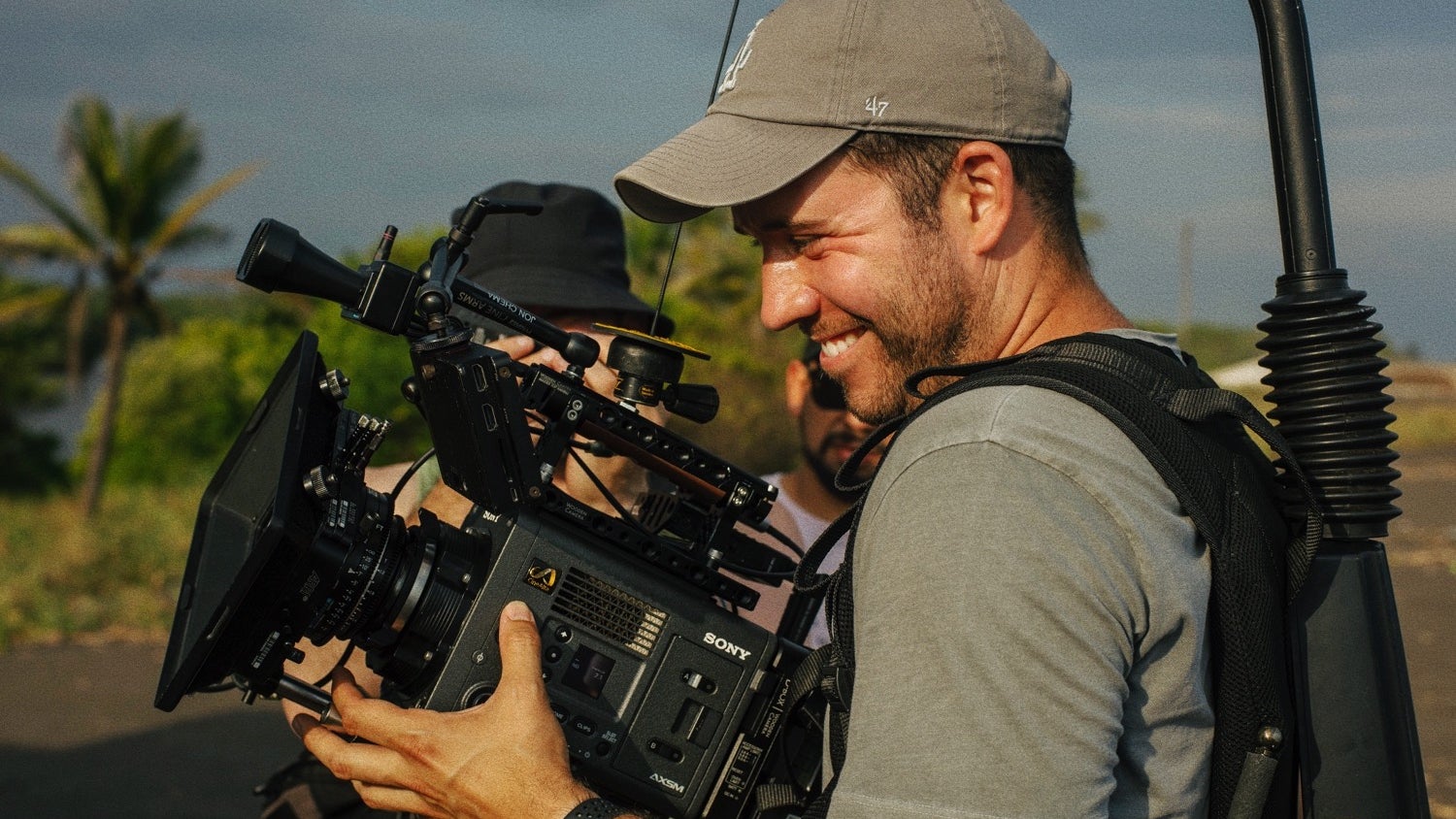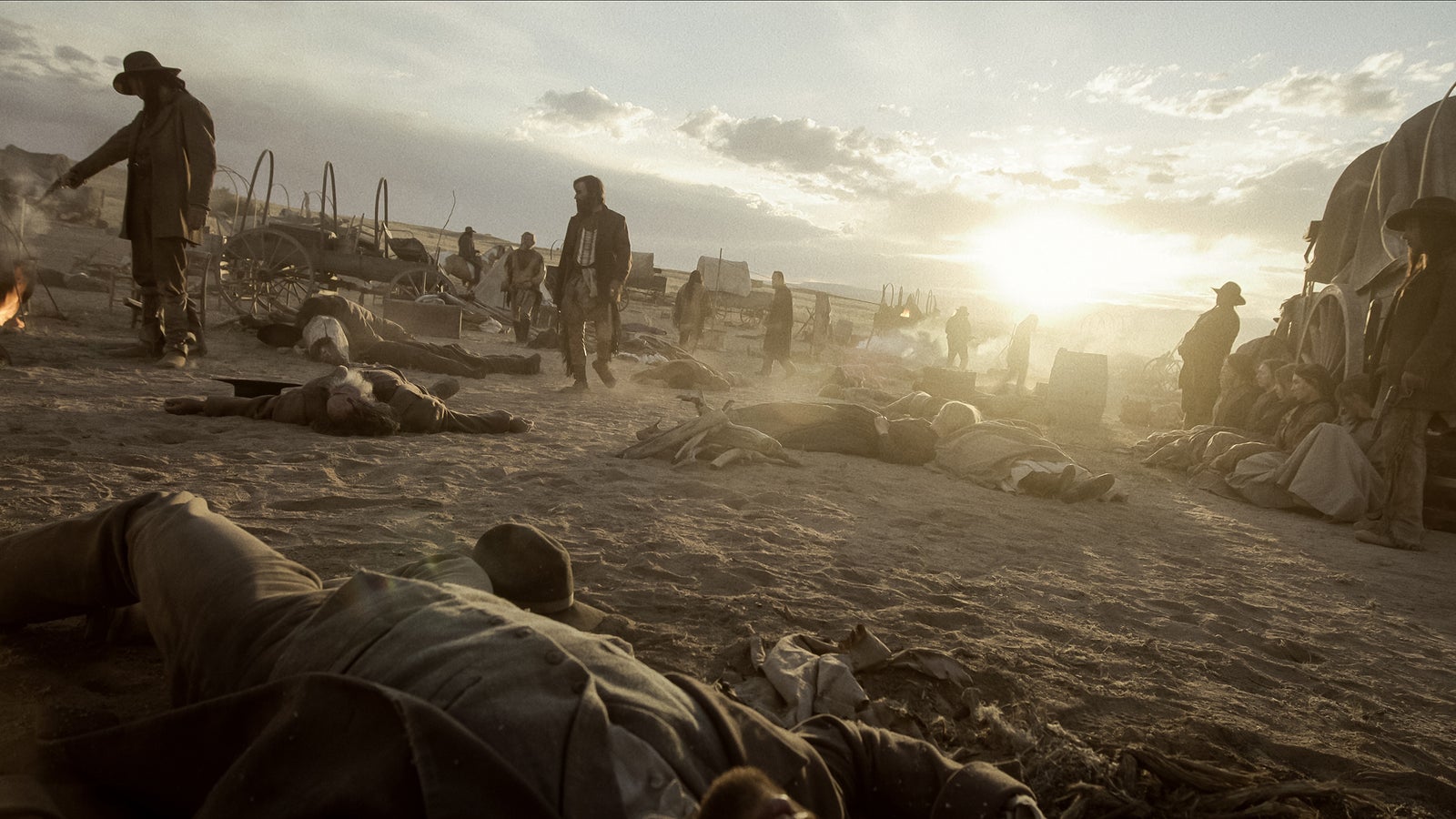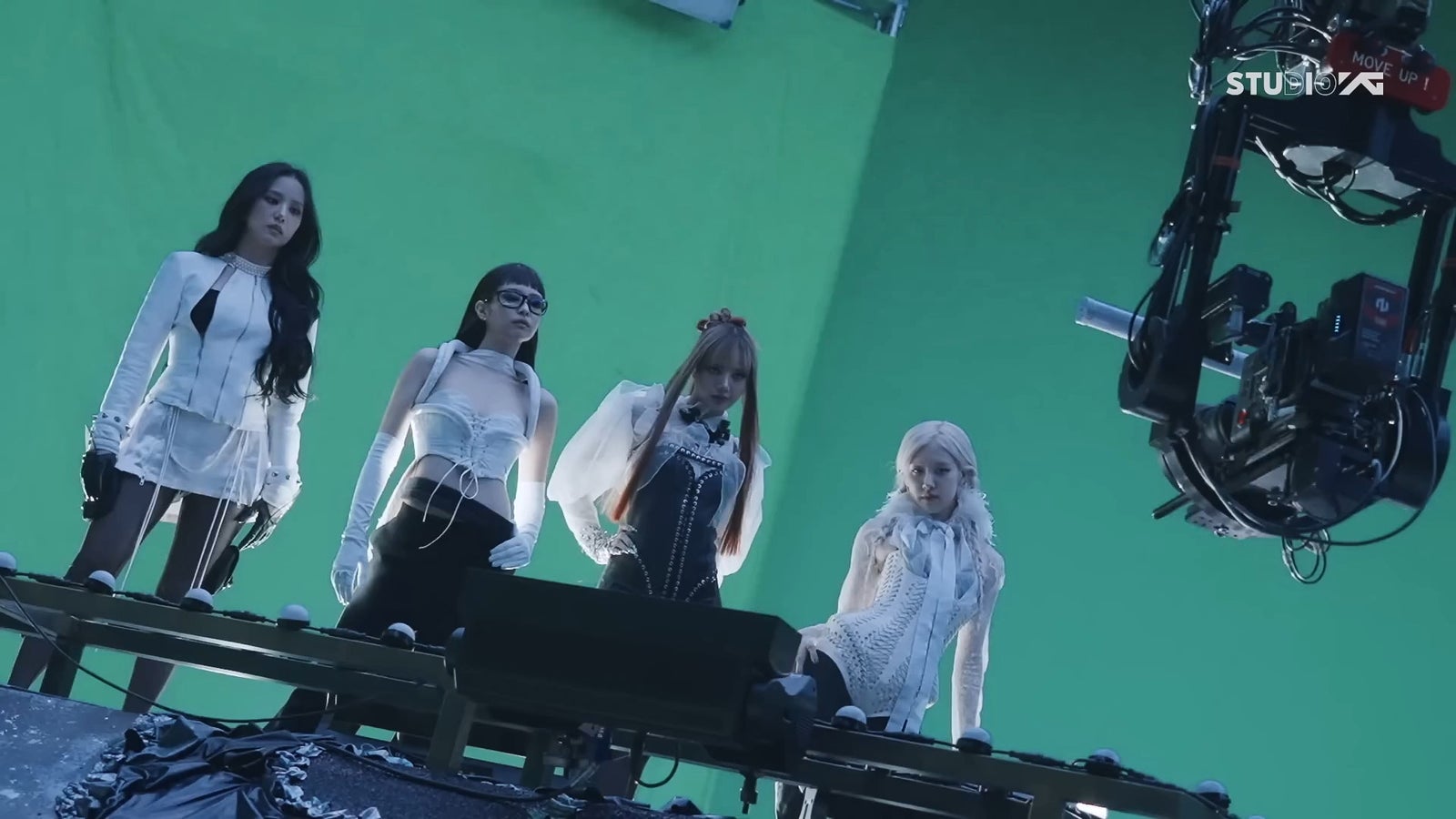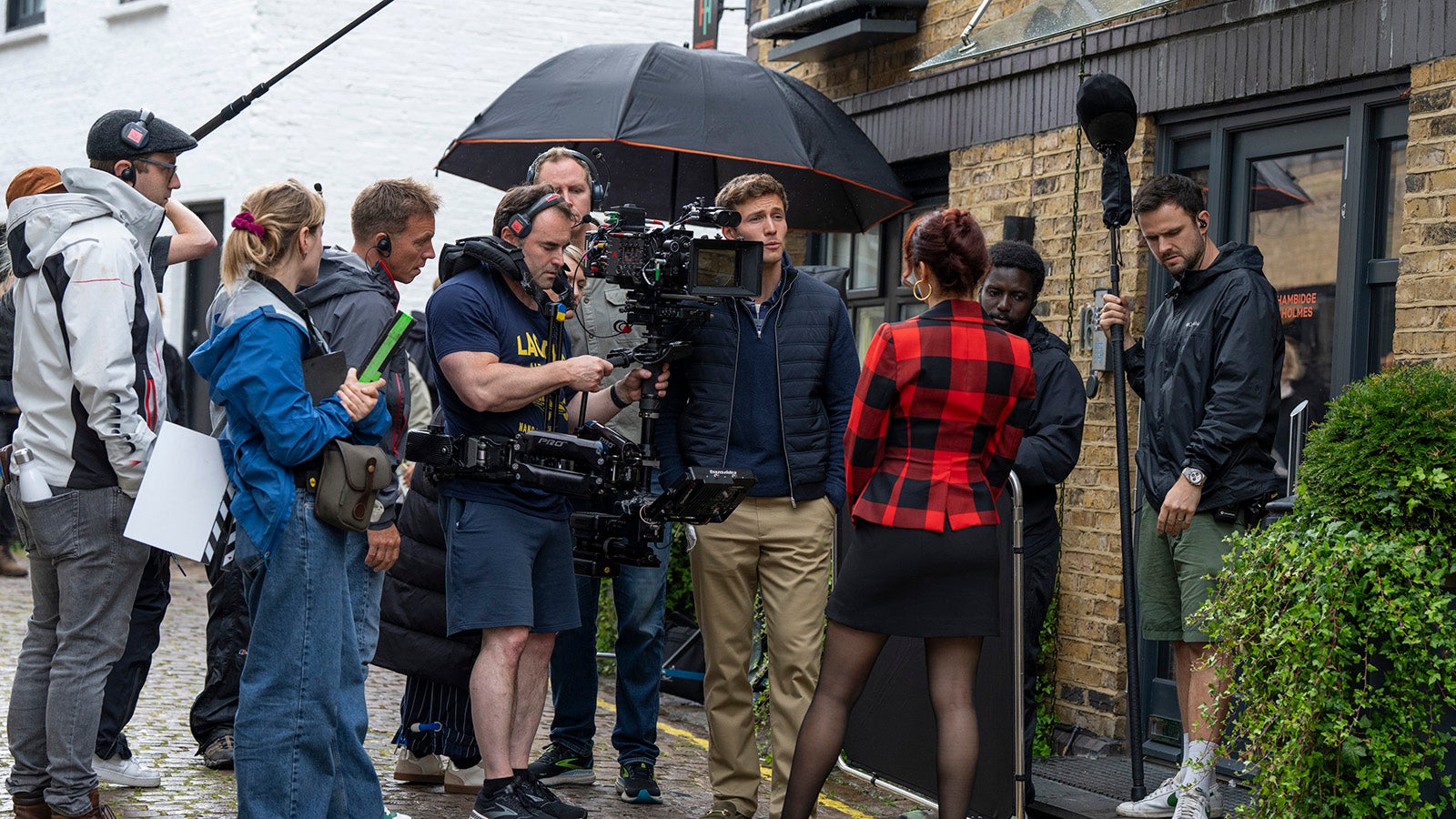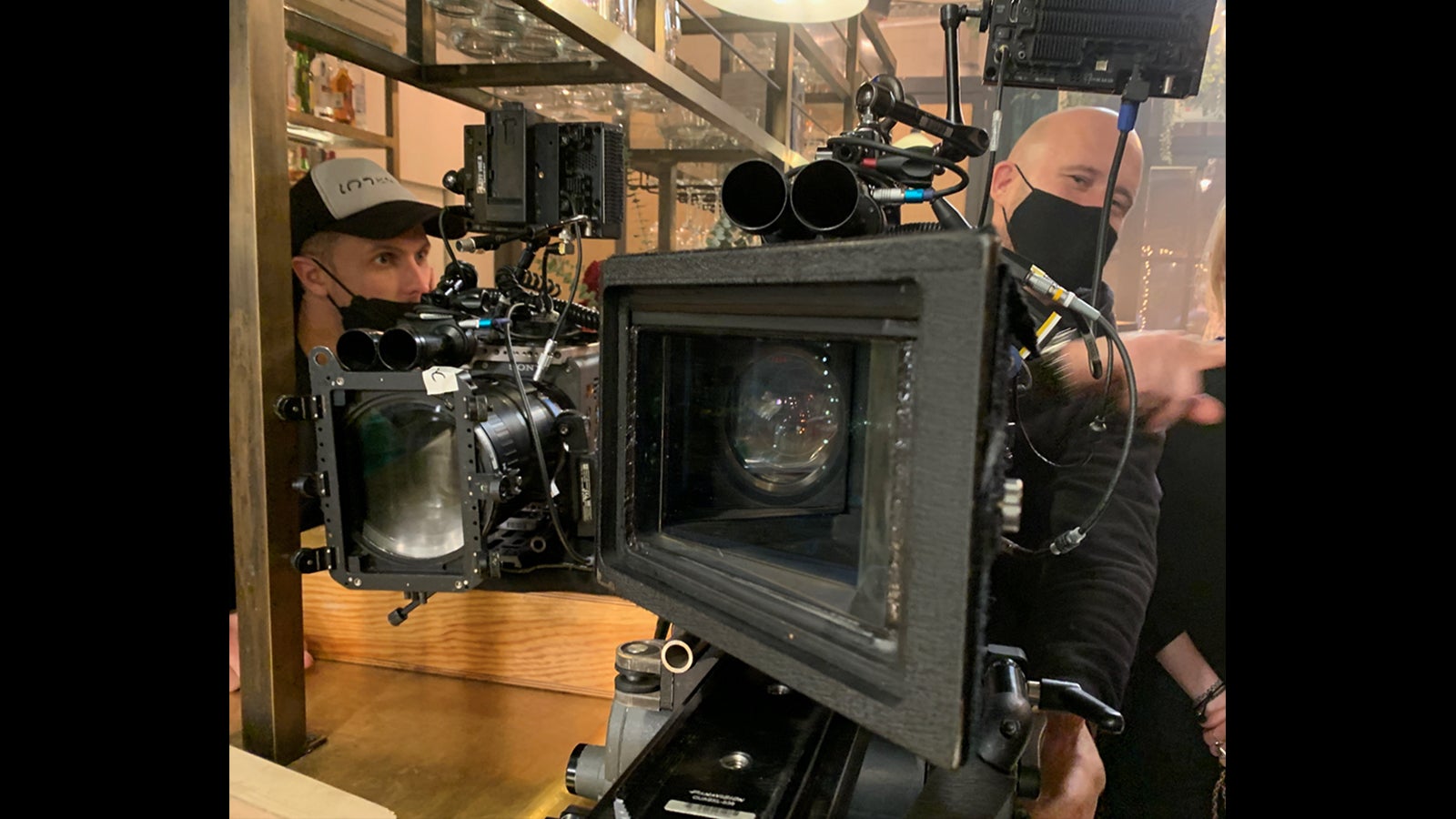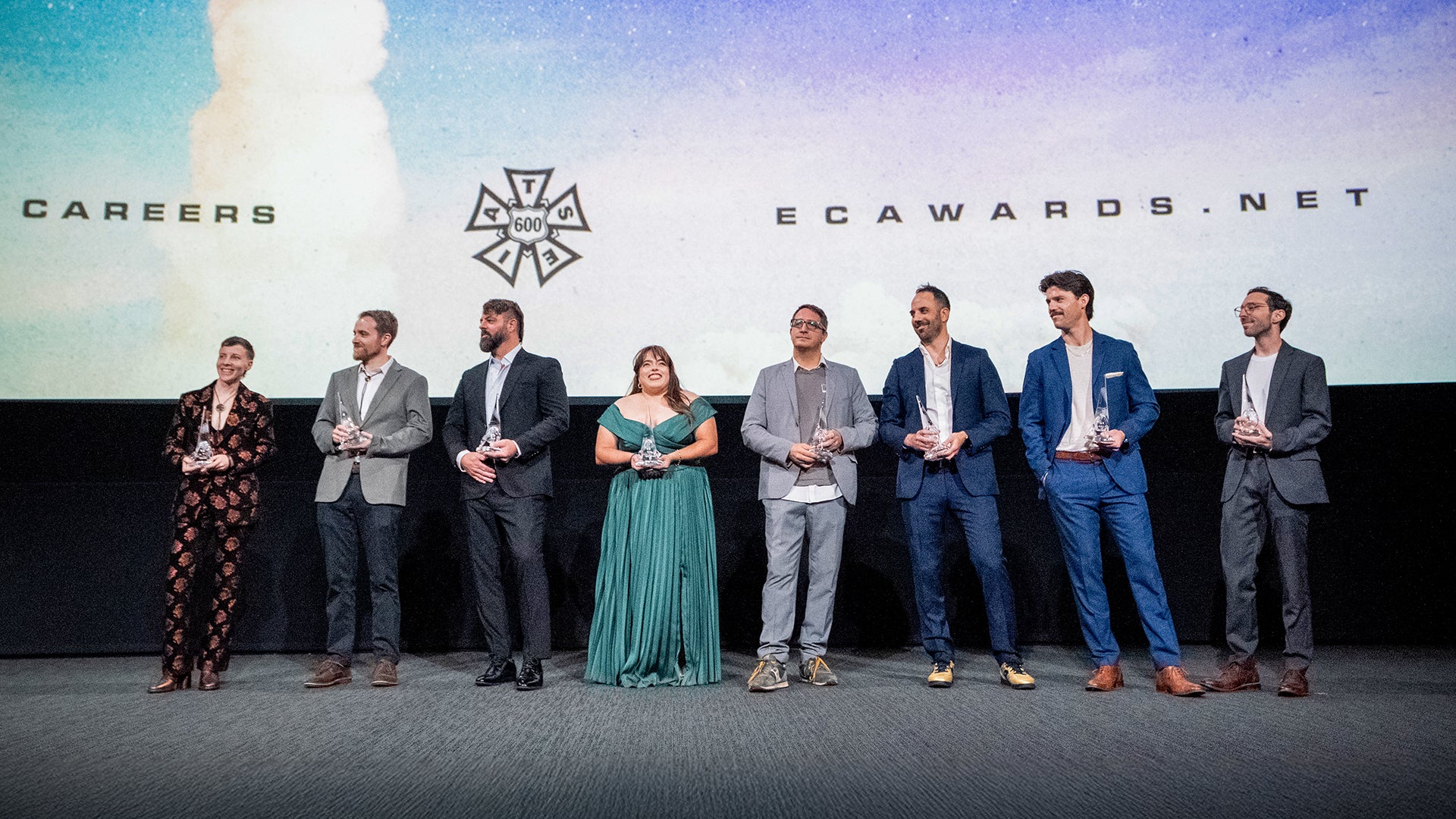
09-30-2025 - Filmmaker Interviews
How DP Mariscela Méndez Found Adolescent Authenticity With Sony VENICE in “The Middle”
By: Yaroslav Altunin
When director Sylvia Ray was crafting her short film The Middle, the filmmaker and her creative team were driven by the authenticity pulled from her early childhood growing up in Barstow, California.
Shot on the Sony VENICE by DP Mariscela Beatriz Méndez, one of the ICG Emerging Cinematographers of 2025, The Middle explores the consequences of teenage bravado through lengthy night shoots, saturated colors, and low-light scenes.
Sony Cine sat down with Méndez to learn more about her creative approach, how she tackled night shoots in the desert on a budget, and how the VENICE made it all possible.
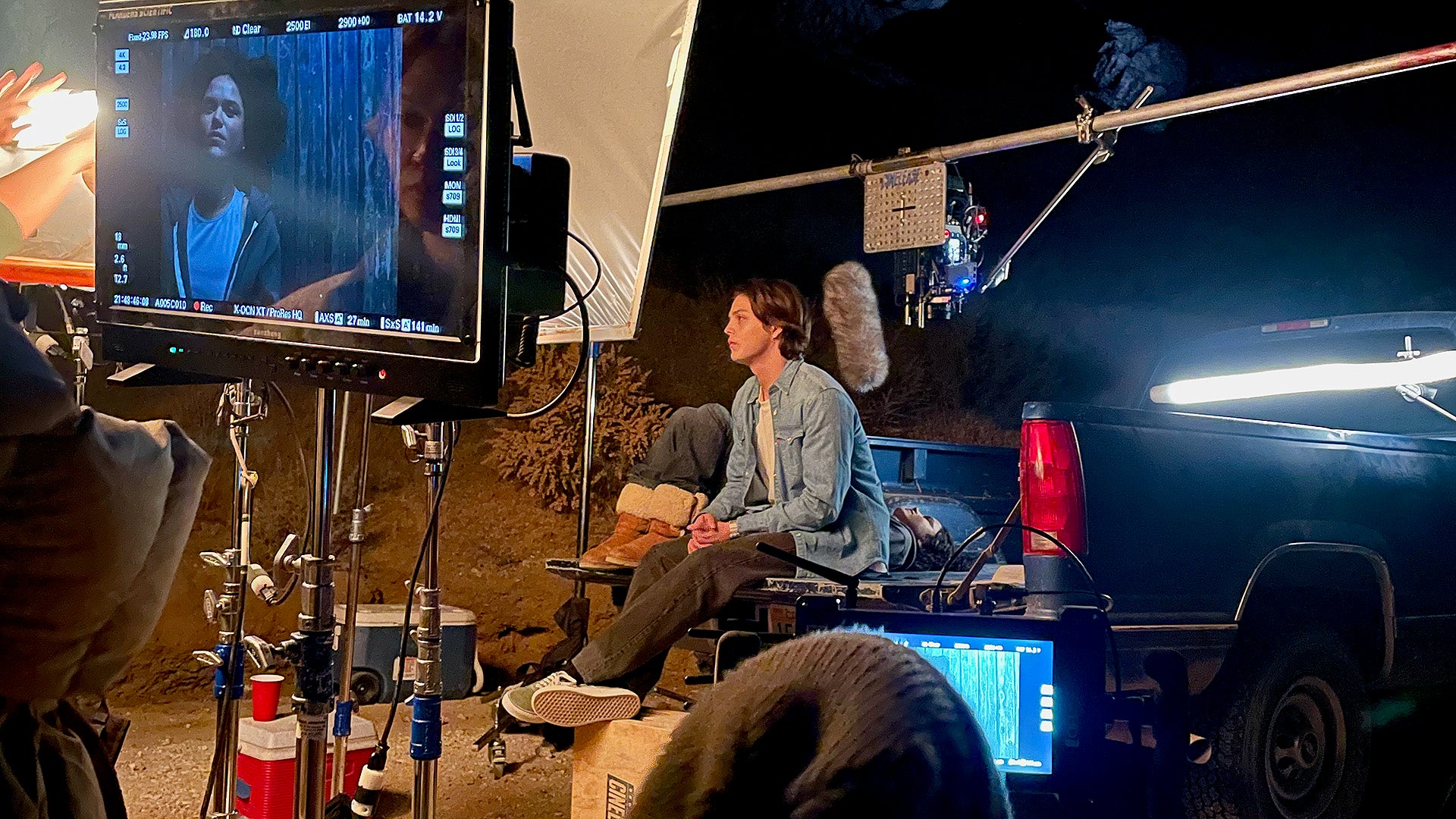
Filmmaker Interview: Uncovering the Visual Layers of The Middle
Shot over the course of three nights in two locations, a fast food restaurant and a fire-lit party between desert canyon walls, The Middle follows a teen girl who must choose to tell the truth or protect her family after a night of partying turns deadly. Pulled from the experiences of Ray's childhood home, where the project was shot, the film blends contrast and camera movement to punctuate tension and dramatic story moments. But it was the experience and partnership between the director and the cinematographer that made it all happen under such a tight schedule.
"I have known Sylvia for quite some time, and we were in a few fellowships together," Méndez said. "One of the things I really love about working with her is that even though she's a writer/director, her background is as an editor."
"When you're with her on set, she's very mindful of how many takes we're doing. You can see her editing in her head. It's great because you get to move a lot faster with someone who has that diverse background and foundation.
The story of The Middle pits two friends against each other, and these opposing forces took center stage, setting the foundation for the other elements of the story. As Méndez and Ray examined the visual aspect of the film, they explored how color and contrast could convey this conflict.
"We talked a lot about the idea of conflict and opposing sides and what that translates to visually," Méndez said. "We talked a lot about what the color palette looks like and color contrast. It's a small desert town, and the elements there, if you look at what naturally exists [at night], it's really just moonlight and fire. So that automatically gave us these two contrasting colors to work with."
"And then one of the things that was really important for Sylvia was making sure that we could feel these jagged, almost dangerous, canyon walls in the background. It's a very vivid memory for her as a kid. It's not really based on anything in particular, but kids in a small desert town, that's where you go to party on the weekends and stuff.
The VENICE is really one of my favorite workhorses when it comes to working on smaller films where you don't have a lot of time and you don't have a lot of budget, but you still need to give it this big feel.
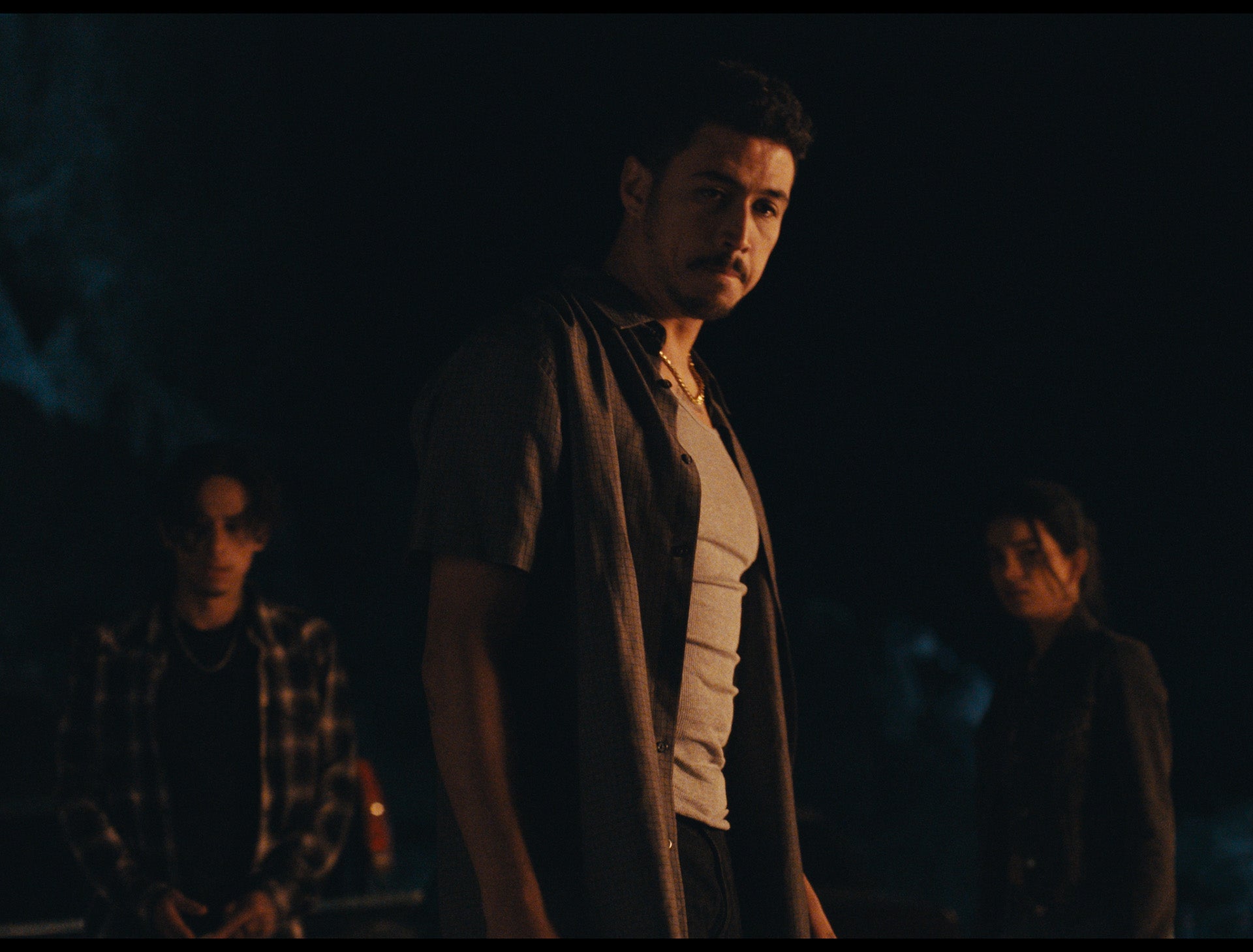
Méndez had the challenging task of making the entire desert environment visible for this party scene, as it was a crucial storytelling tool. To make these elements stand out, the cinematographer drew inspiration from the late '90s and early 2000s.
"I think right now, the trends in terms of moonlight are to go very teal or to go almost very silvery and just a faint blue sometimes," Méndez said. "But if you look back to the late 90s, early 2000s, it was a little bit more saturated. It's not quite that Congo Blue from the '80s or the early '90s, but it still has a lot more saturation. We definitely wanted to bring in that to help tell the story."
"And then in the foreground, we had different variations of fire light flicker effects to have more dimension within this glow on [the actor's] faces. So we used this cooler moonlight and then we contrasted that with these warmer tones in the foreground."
To continue adding visual layers to the tension in the story, Méndez combined her lighting and color choices with an aspect ratio that almost had a physical effect on the cast. The addition of distinct camera movements for each scene also helped the film balance conflict within the decision between right and wrong that was at the core of the story.
"We also talked a lot about tension, which was a really big throughline in this project, and we chose to support that in various ways," Méndez said. "We chose more medium close-ups, and we also wanted to kind of box everyone in. So we chose this 1.33:1 aspect ratio just to compress everything, because our character is caught in the middle of what decision do you make between right and wrong, and how that one choice can impact not just her life, but her family, and everyone else's lives in this story."
"And then in terms of camera movement, I was operating handheld for the party scene and everything exterior, and then we had these very quick Steadicam movements in the Del Taco that we shot at. It's almost as if it's following her. We chose that quicker, smooth motion for those moments to elevate the tension before [the characters] get into the bathroom where the story really unfolds."
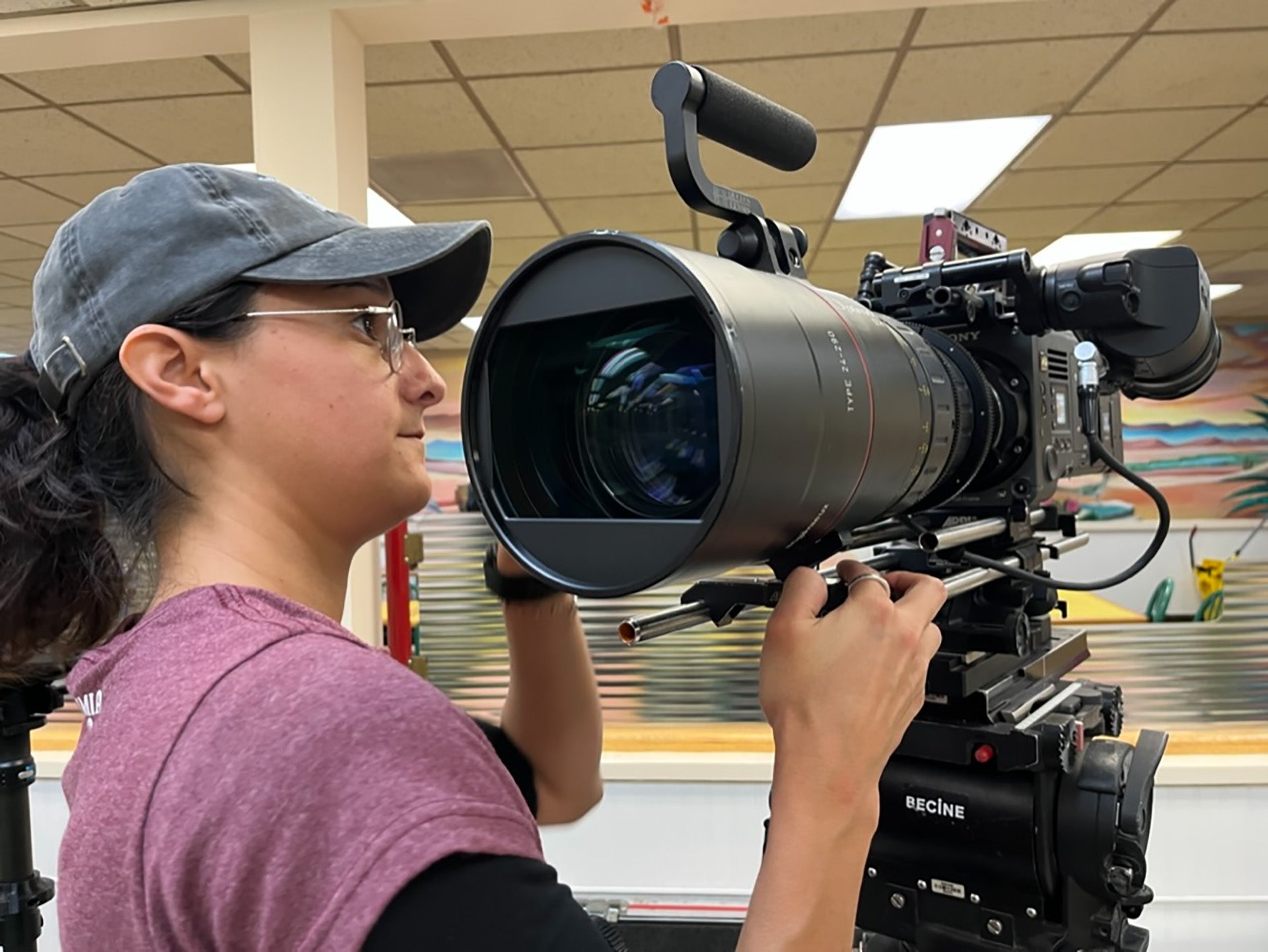
Filmmaker Interview: Why Méndez Chose the Sony VENICE for The Middle
To capture all the nuances that made The Middle compelling, Méndez needed a camera that could handle a fast-paced workflow and provide the high sensitivity required for night scenes. The Sony VENICE, which was provided by Bianca Halpern at BeCine, was not only up for the challenge, but gave Méndez the flexibility to tackle the challenges she discovered on set.
"The main reason I chose the [VENICE] is because of the 2500 native ISO," Méndez said. "That, for me, did a lot of the heavy lifting when we were in the canyon because we had two 7000W putt putt generators to power everything."
"That's not a lot when you have to light the foreground and a party scene and these canyon walls," Méndez added. "So having a camera that has a really sensitive sensor just really allowed us to play more and to have more flexibility. Everything just looks so much better because we don't have a lot that we're working with, and it means that we can do a lot more with less."
The Middle was shot almost entirely at ISO 2500. At night, this became a necessity to pull out all the light they could from the equipment the production team had. However, in the restaurant, the internal NDs opened up the camera in a way that gave Méndez confidence in her composition, letting her focus on creativity instead of problem-solving.
"The VENICE is really one of my favorite workhorses when it comes to working on smaller films where you don't have a lot of time and you don't have a lot of budget, but you still need to give it this big feel," Méndez said. "So that confidence of having the high native ISO, coupled with the full stops of ND, just gives me so much flexibility to make quick changes as needed."
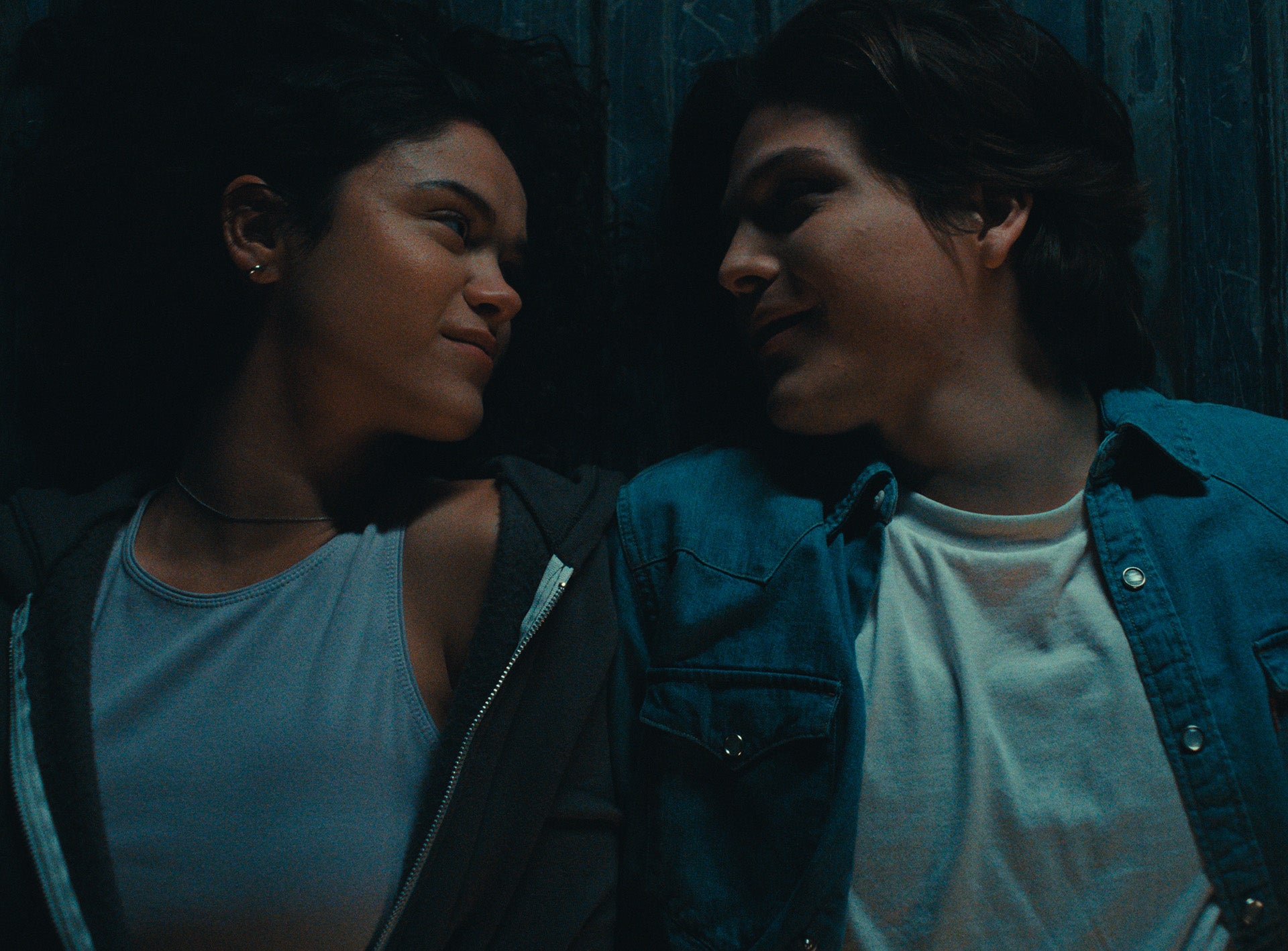
How Méndez Found Authenticity in the Frame
The Middle premiered in 2024 at the Flickers Rhode Island International Film Festival and has since screened at American Film Convention, the Sundial Film Festival, Yes Fest, Cucalorus International Film Festival Selection 2024, and the HollyShorts Film Festival 2024 where it the film was nominated for Best LatinX Film. The feature film version is set to shoot in February of 2026.
But for Méndez, the short has remained a project of hope and authenticity. As more eyes witness the film, a sense of camaraderie grows between all the kids who partied in the desert.
"My hope is that this film would feel authentic. Like you're just someone else at the party getting to witness this," Méndez said. "That it's not from this outside POV. That you're with these characters the whole time."
"And when you watch it, you kind of feel that way. Like you're with these characters the entire time."
The Middle screened once again on Sept 28th at The Emerging Cinematographer Awards to celebrate Méndez as an honoree.
—
To learn more about the Sony Venice and the other cameras in the Sony Cinema line, visit our Camera Comparison Chart.
